What is COPD? 7 Facts You Need to Know

As the third leading cause of death in the United States, chronic obstructive pulmonary disease, or COPD, probably affects – or will affect – someone you know. While COPD may not be highly profiled as heart disease or cancer, it’s still one of the most prevalent and deadly conditions today. In order to fight against the development of COPD and support your lung health, you should educate yourself on its facts, causes, and symptoms.
7 Facts You Should Know About COPD
In order to reduce COPD in our world, along with every other disease known to man, awareness around the issue is crucial. Prevention is the lock, and knowledge is the key.
1. What is COPD?
Two conditions make up what we commonly refer to as COPD: emphysema and chronic bronchitis. Emphysema damages the air sacs in the lungs, causing shortness of breath. Chronic bronchitis is very similar, and also impairs breathing ability. Other conditions grouped under the COPD umbrella include non-reversible asthma and some forms of bronchiectasis, a condition defined by the widening, stretching, and scarring of the airways in the lungs.
2. Who is Affected by COPD?
COPD is estimated to affect 24 million people in the United States, with 3 million new cases every year. It primarily hits adults 40 years and older who have been exposed to lung irritants, like tobacco smoke or heavy air pollution. Many people who suffer from COPD are in the early stages and may not know they have it.
3. Causes of COPD
COPD has a number of causes, many of which are avoidable. Here’s a quick rundown on the main contributors. First, smoking cigarettes, cigars, and pipes, as well as exposure to secondhand smoke, is the most common causes of COPD. Inhaling harmful fumes, chemicals, and dust, especially from work environments, are also contributing factors to many people. A genetic condition known as AATD, or Alpha-1 Antitrypsin Deficiency, increases the risk. Individuals with these genes have white blood cells that attack lung tissue and cause the deterioration observed in COPD.
4. The Effects of COPD On Your Body
Healthy lungs have strong, well-shaped airways called bronchioles. The bronchioles of COPD patients become weak, lose their shape and get clogged with mucus. Lungs also have numerous air sacs, and the walls of the air sacs in COPD patients deteriorate, subsequently becoming less efficient.
5. Symptoms of COPD
Persons with COPD suffer from difficulty breathing, a symptom that carries a heavy toll on quality of life. Flare-ups may occur and include frequent coughing, hyperventilation, frequent respiratory infections, wheezing and tightness in the chest. Coughs may produce mucus, or they may be dry and hacking.
6. The Outlook for COPD
The damage caused by COPD cannot be reversed; however, if it’s caught early enough, its progression can be slowed. Patients are more susceptible to diseases that affect the lungs, such as the flu and pneumonia. For this reason, patients have to be carefully monitored by their doctor in order to catch these secondary conditions early.
7. 3 Natural Remedies for COPD
Although it cannot be cured, there are a few ways to make yourself feel a little better. Vitamin D deficiency is common among COPD patients. Studies have shown increasing vitamin D levels reduces the frequency and occurrence of flare-ups. [1] [2] I recommend supplementing with at least 2000 IUs of vitamin D3 daily; however, specific recommendations can only be determined after getting your vitamin D levels tested. Studies suggest this easy-to-find supplement eases coughing and tightness. [3] The research recommends 1,200 mg taken daily for the best effect. Magnesium improves the ability of muscles to relax, so supplementing with magnesium may help with opening the airways. Take 500mg of magnesium up to twice daily, depending on your needs.
One Final Thought
If you’re suffering from COPD or know someone that is, you can support your health by following the above recommendations. As mentioned previously, be sure to use these strategies alongside the advice of your doctor. Don’t replace medications with any supplements; instead, look at supplement regimens as a complementary approach to your medical treatment.
References (3)
- Adrian R Martineau, Wai Yee James, Richard L Hooper, et al. Vitamin D3 supplementation in patients with chronic obstructive pulmonary disease (ViDiCO): a multicentre, double-blind, randomised controlled trial. The Lancet Respiratory Medicine, 2014; DOI: 10.1016/S2213-2600(14)70255-3.
- Berg I1, Hanson C, Sayles H, et al. Vitamin D, vitamin D binding protein, lung function and structure in COPD. Respir Med. 2013 Oct;107(10):1578-88. doi: 10.1016/j.rmed.2013.05.010.
- Tse HN1, Tseng CZ1. Update on the pathological processes, molecular biology, and clinical utility of N-acetylcysteine in chronic obstructive pulmonary disease. Int J Chron Obstruct Pulmon Dis. 2014 Aug 6;9:825-36. doi: 10.2147/COPD.S51057.
†Results may vary. Information and statements made are for education purposes and are not intended to replace the advice of your doctor. If you have a severe medical condition or health concern, see your physician.
Posted in: Health > Whole Body Wellness > Respiratory,

Dr. Edward Group, DC
FOUNDER | HEALER | ADVOCATEDr. Group, DC is a healer and alternative health advocate, and an industry leader and innovator in the field of natural health who is dedicated to helping others. He is a registered doctor of chiropractic (DC), a naturopathic practitioner (NP), and proud alum of Harvard Business School and MIT Sloan School of Management. Dr. Group, DC is the founder of Global Healing – a mission and vision he has shared through best-selling books and frequent media appearances. He aims to spread his message of positivity, hope, and wellness throughout the world.










